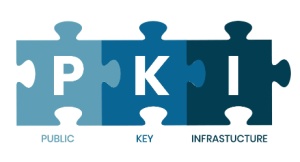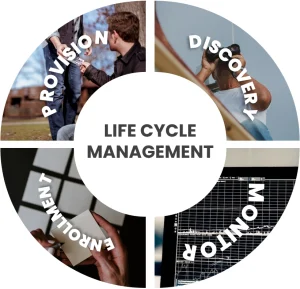
Public Key Infrastructure (PKI) is a necessity in today’s digital-first world. Organisations leverage on Digital Certificates to secure their networks, safeguard sensitive data, and ensure compliance with regulatory standards. As we move forward, having a PKI is beyond just issuing and renewing certificates, an organisation must have the capability to manage the whole lifecycle of each individual certificate.
The Growing Importance of CLM
As businesses embrace cloud computing, IoT devices proliferate, and quantum computing looms on the horizon, the challenges and complexities of CLM are set to amplify dramatically.
A single expired or compromised certificate can lead to downtime, security breaches, and reputational damage.
Over the past decade, Netrust spoke with countless customers on PKI, and we see close to zero or minimal effort in certificate management. Here are some of the top challenges that we see.
- Lack of Visibility
Many organisations struggle with visibility of their certificate inventory, leading to unexpected expirations and security lapses. They rely on spreadsheets and manual tracking which are not only time-consuming but also error-prone. - Manual Processes
From the generation of certificate requests, signing of those requests, to completing the signed certificates, many system owners go through very manual and complicated steps and can take days to complete a single certificate request. - Compliance & Governance
Organisations are unable to enforce policies regarding certificate generation, such as key length and strong algorithms, and thus cannot restrict certificate owners from generating non-compliant certificates.
How to Establish a Robust CLM Strategy
To stay ahead of security challenges, organisations must embrace a modern approach to CLM. Here are some key strategies to optimise certificate management:
- Centralised Management
With more Certificate Authorities (CA) and platforms being used today, a single pane of glass view into all digital certificates across cloud, on-premises, and hybrid environments helps prevent surprises. Automated discovery tools can scan for unmanaged certificates and bring them under control. - Proactive Expiration & Risk Monitoring
Check certificate validities constantly. Systems to have notifications automatically sent to system owners. This allows organisations to proactively monitor for anomalies and act before issues arise. - Automate Certificate Renewal & Provisioning
Avoid reliance on manual processes. Leverage automation to handle certificate issuances, renewals, and revocations to minimise human error and ensure compliance. - Crypto Agility & Algorithm Flexibility
Organisations should adopt a crypto-agile approach, allowing them to swiftly transition to new encryption algorithms as threats evolve. - Implement Policy Driven Certificate Governance
Establish standardised policies for certificate expiration, renewal timelines, and revocation to ensure consistency and compliance across the organisation. System owners must adhere to company security policies and should not be able to choose freely.
CLM Solutions: Simplifying Implementation
Organisations do not need to build complex, custom certificate management systems from scratch. Many modern CLM solutions offer out-of-the-box features that align with best practices and security requirements. These solutions provide:
- Automated Discovery – Discover all the certificates within your organisation.
- Proactive Monitoring – Real-time tracking and monitoring of all certificates across environments.
- Centralised Management – A one-stop platform for everything to do with certificates, integrating with multiple CAs across multiple platforms.
- Seamless Provisioning – Compatibility with existing security tools, DevOps workflows, and enterprise systems enables automated certificate issuance and renewal, eliminating human error and reducing operational overhead.

Conclusion
Effective Certificate Lifecycle Management is not just about improving operations, it’s about ensuring business continuity, security, and trust. By adopting automation, improving visibility, and enforcing governance policies, organisations can build a resilient foundation for the future of digital security.
Is your organisation ready to optimise its CLM strategy? Contact us at https://www.netrust.net/contact-us/ now. to learn how we can help you secure the foundation of your digital infrastructure.
Follow us on LinkedIn for the latest happenings/updates.


